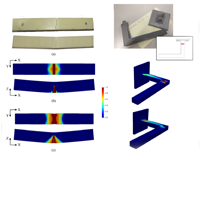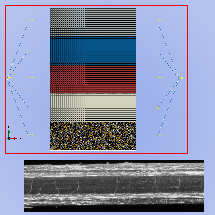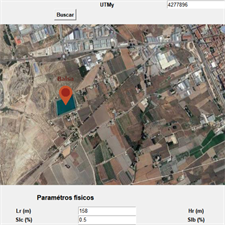events
[Video available!] Severo Ochoa Coffee Talk at CIMNE - "Was the Mediterranean once a desert? The Messinian Salinity Crisis: 50 years of controversy and recent advances from a modelling perspective", by Hanneke Heida
Wednesday, September 1st, 2021. Time: 15h
Online - Session link: https://meet.google.com/wgr-kyjv-cyr
ABSTRACT
About 5.5 million years ago the Mediterranean Sea underwent a dramatic hydrological, environmental and biological crisis, as its connection to the global ocean and water supply was disrupted. This Messinian Salinity Crisis (MSC) left a salt deposit of thousands of cubic kilometers on the basin floor, and caused deep incision of rivers on its margins as they adjusted to a lowered water level. This makes it one of the largest salt deposits on earth, and by far the youngest, least affected by subsequent tectonic events.
After 50 years of scientific effort by geologists, geochemists, geophysicists and others some of the large controversies surrounding the MSC remain unresolved. In this talk I will discuss the advances in MSC research since its discovery during the first oceanic drilling campaign in the Mediterranean in 1970, and illustrate how the vast amount of data gathered in these efforts now allow us to use modelling to decipher some of its mysteries.
SPEAKER CV
Hanneke Heida (1994) obtained her BSc. And MSc. In Earth Sciences at Utrecht University (NL). She is currently working as a PhD candidate at Geosciences Barcelona - CSIC under the supervision of Daniel Garcia Castellanos and Ivone Jiménez Munt. Her work focusses on using numerical modelling to quantify the vertical motions and paleo topography of the Mediterranean since the onset of the Messinian Salinity Crisis 6 million years ago, to better understand the dynamics of a basin undergoing massive and rapid environmental change.
Related items
-
14/11/2024ABSTRACT The Destination Earth Initiative (DestinE) has completed the first phase and the platform ...
-
18/04/2024ABSTRACT This pre-award unit’s event explored key aspects of efficiency and value in AI-drive...
-
17/04/2024ABSTRACT In this work, we propose a convex, finite-dimensional and exact relaxation for non-convex,...
-
19/02/2024ABSTRACT Additive manufacturing techniques, among which 3D Concrete Printing (3DCP) and polymer ext...
-
21/12/2023ABSTRACT This talk is to introduce to the attentive spectator of CIMNE the evaluation process carri...
-
22/11/2023Wednesday, December 13th, 2023. Time: 15h Hybrid! O.C. Zienkiewicz Room, C1 Building, UPC...
-
22/11/2023ABSTRACT One of the main problems one can encounter when modelling wave propagation in saturated an...
-
20/11/2023ABSTRACT Recently, in Italy, many catastrophic events have involved bridges and viaducts in transpo...
-
04/10/2023Wednesday, October 25th, 2023. Time: 12.30 p.m. Hybrid! O.C. Zienkiewicz Room, C1 Buildin...
-
30/09/2023Wednesday, November 29th, 2023. Time: 15h Hybrid! O.C. Zienkiewicz Room, C1 Building, UPC...
-
30/09/2023Wednesday, November 8th, 2023. Time: 15h Hybrid! O.C. Zienkiewicz Room, C1 Building, UPC ...
-
05/05/2023Friday, May 26th, 2023. Time: 12 noon Hybrid! O.C. Zienkiewicz Room, C1 Building, UPC Cam...
-
24/02/2023Wednesday, May 24th, 2023. Time: 15h Hybrid! O.C. Zienkiewicz Room, C1 Building, UPC Camp...
-
24/02/2023Friday, March 24th, 2023. Time: 12 noon Hybrid! O.C. Zienkiewicz Room, C1 Building, UPC C...
-
24/02/2023Wednesday, April 12th, 2023. Time: 15h Hybrid! O.C. Zienkiewicz Room, C1 Building, UPC Ca...
-
24/02/2023Wednesday, March 15th, 2023. Time: 15h Hybrid! O.C. Zienkiewicz Room, C1 Building, UPC Ca...
-
24/02/2023Tuesday, April 18th, 2023. Time: 15h Hybrid! O.C. Zienkiewicz Room, C1 Building, UPC Camp...
-
07/02/2023Friday, February 17th, 2023. Time: 12 noon Hybrid! Agrobiotech Lleida Park, CeDiCo Building, 1st Flo...
-
18/01/2023Wednesday, February 15th, 2023. Time: 15h Hybrid! O.C. Zienkiewicz Room, C1 Building, UPC...
-
27/10/2022Wednesday, December 14th, 2022. Time: 15hHybrid! O.C. Zienkiewicz Conference Room, C1 Building,...






















